Abstract
Seedlings of wheat (Triticum aestivum L.) were grown in special holders that permitted the coleoptile and early roots to develop in moist air. The orientation of the organs of seedlings erect to gravity was compared with that of organs produced on a horizontal clinostat. Orientation was described by the angular position of each organ tip with reference to the axis of the embryo. Comparative tests were also made with barley, rye, and oat seedlings.
The coleoptile of all species developed curvatures in 3 dimensions when geotropic responses were eliminated. The primary root was not precise in its positive geotropism. Seedlings grew on clinostats with much greater variations in the lateral orientation of the central root and with a tendency for it to curve away from the endosperm to a greater degree than in erect seedlings.
The symmetry of root system in wheat was found to depend on a specific mechanism. Under the influence of gravity the earliest lateral roots were oriented in a plane at characteristic angles of about 57.5° with the ideal primary root. The corresponding angles for lateral roots growing on clinostats were greater by about 47.5° as a result of epinasty not previously reported in roots. This force also appeared to be active in the seminal roots of barley and rye but not of oats.
The curvatures in coleoptiles grown without the directional effects of gravity correspond to the results of growth imbalance in Coleus stems in the absence of lateral transport of their auxin by gravity. Root epinasty appears to be based on auxin imbalance. Curvatures in the primary root are also interpreted as results of asymmetrical distribution of growth hormone.
Full text
PDF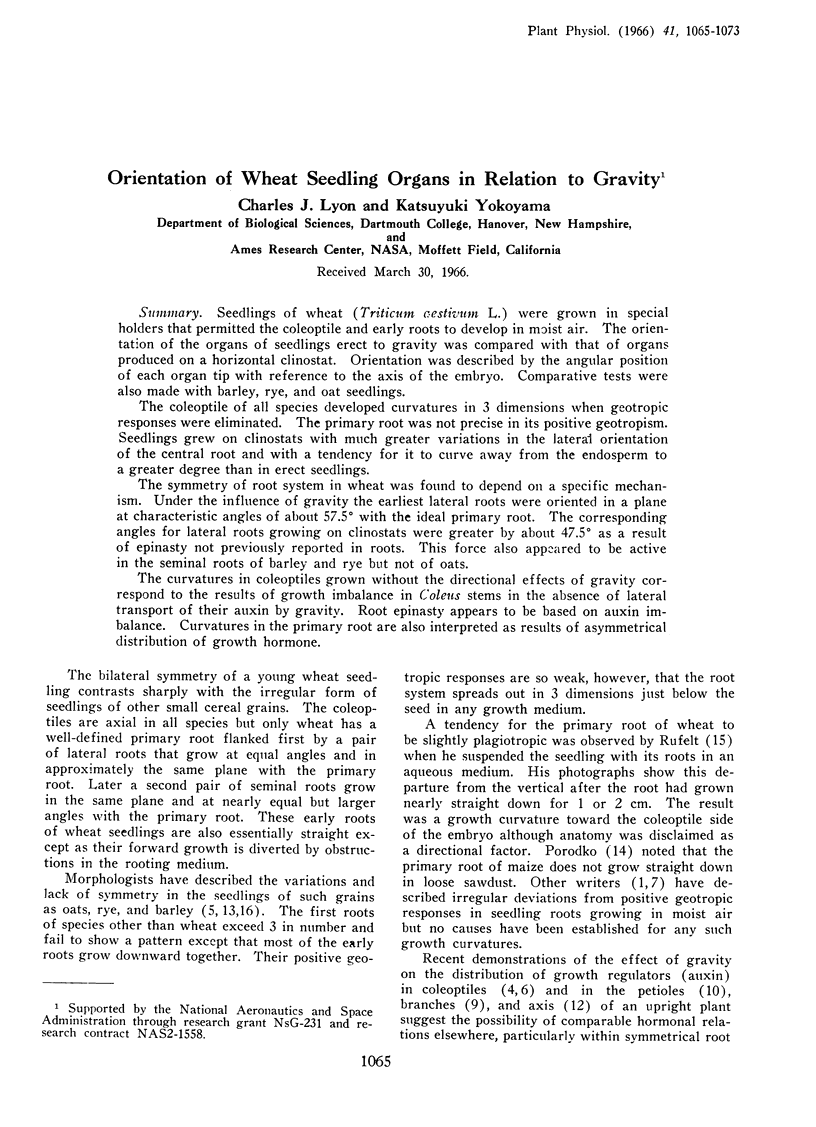
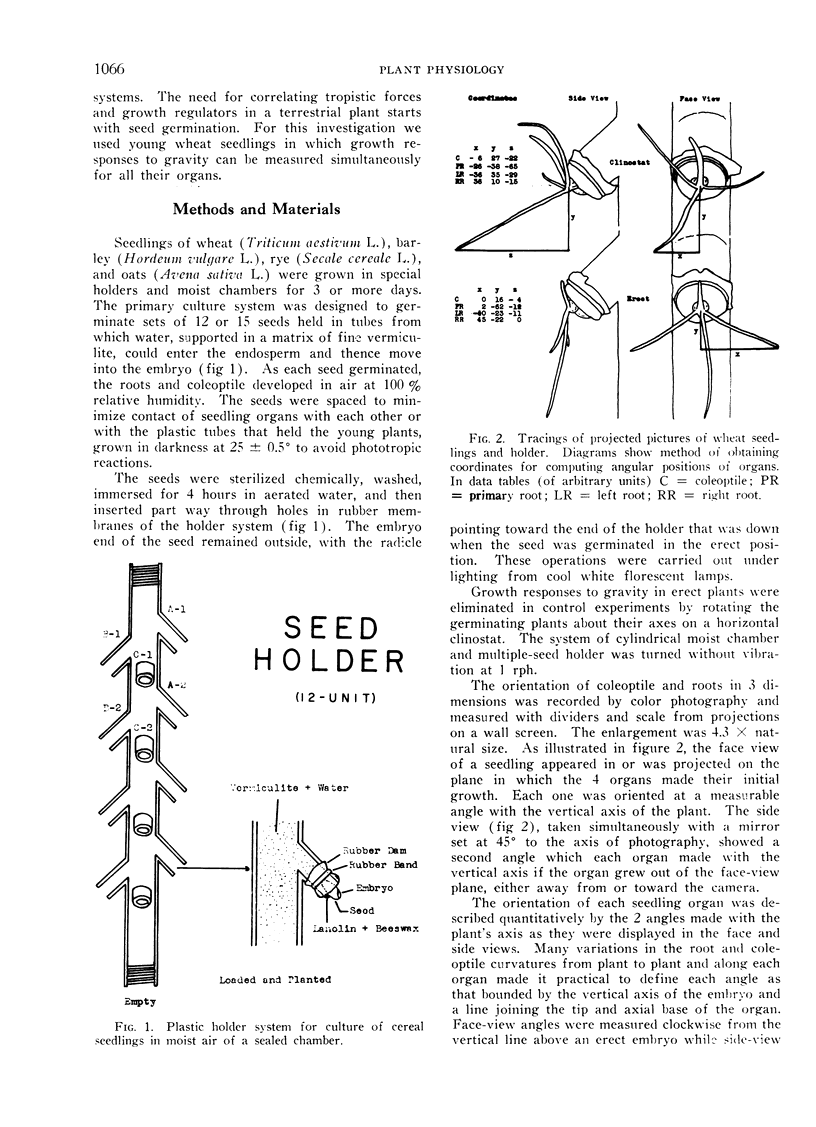
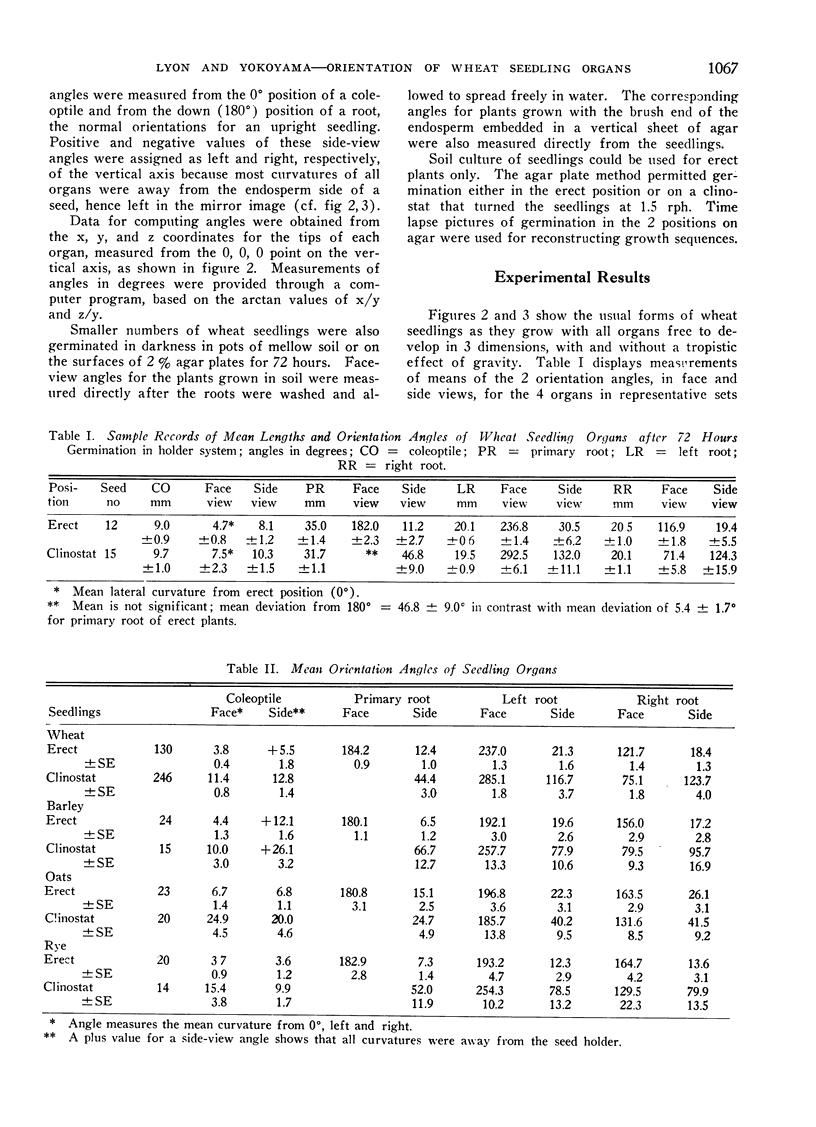
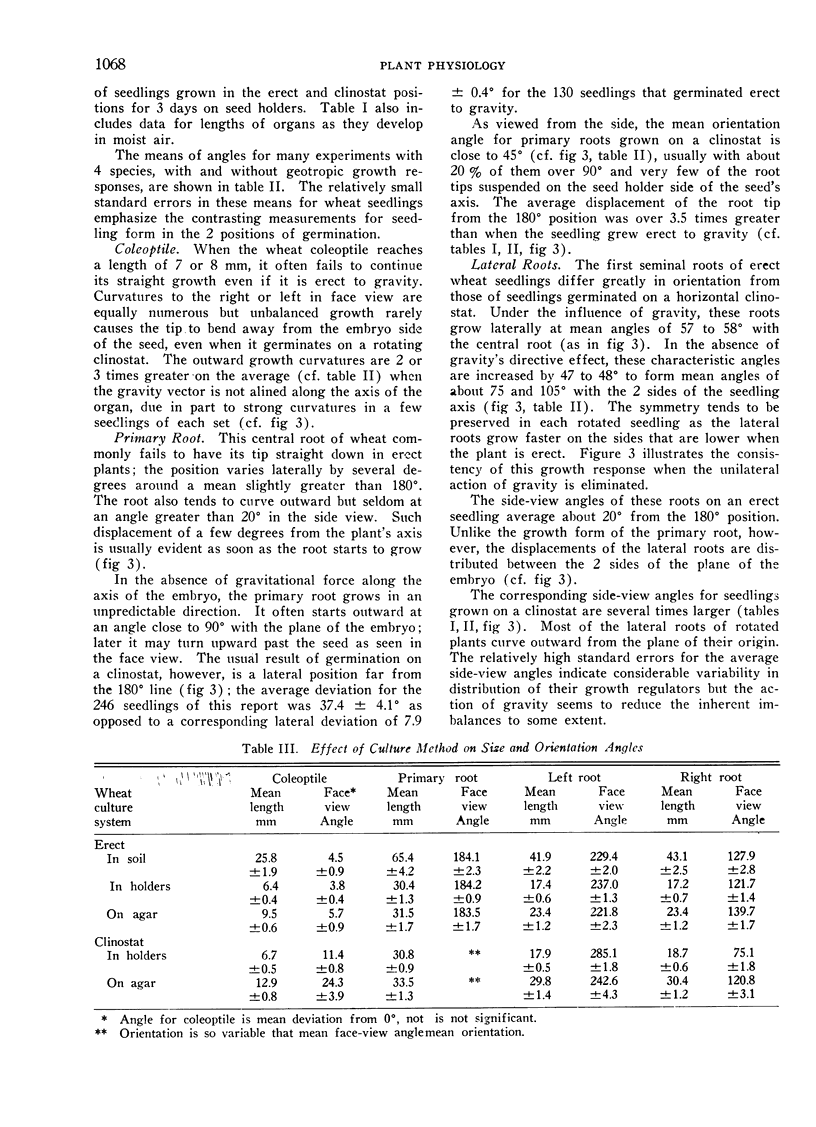
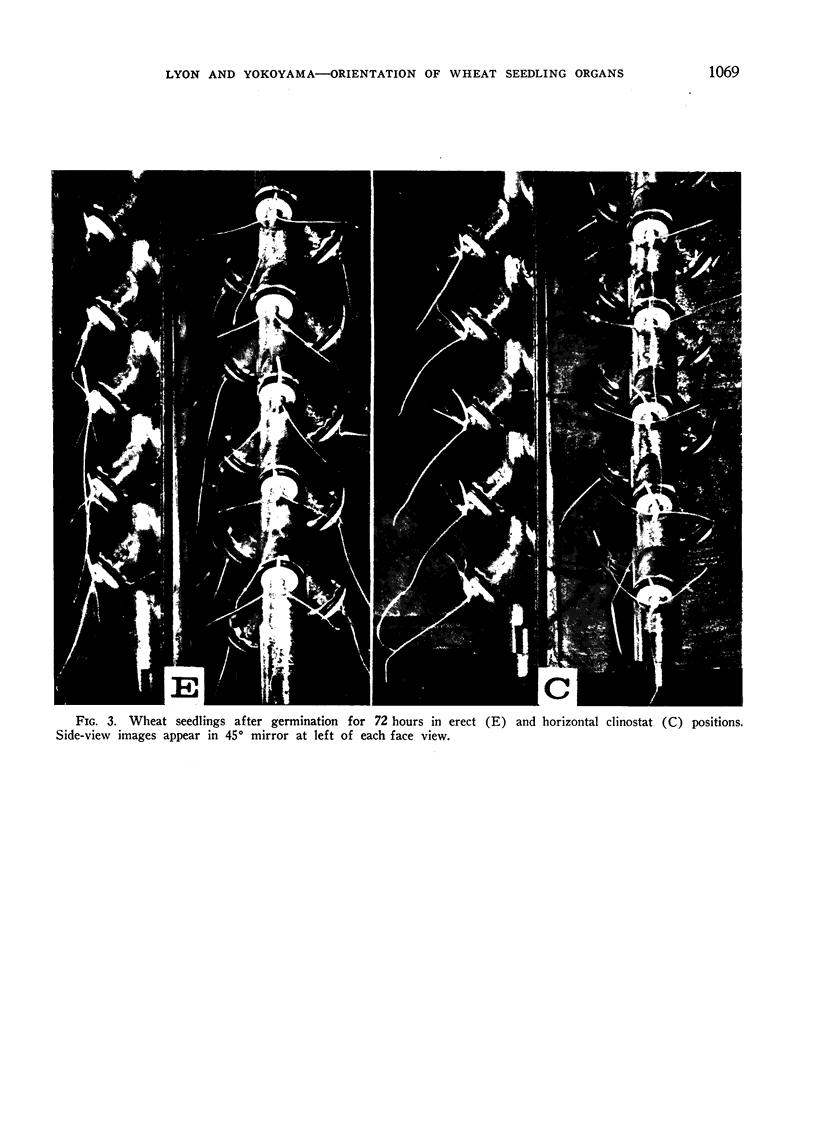
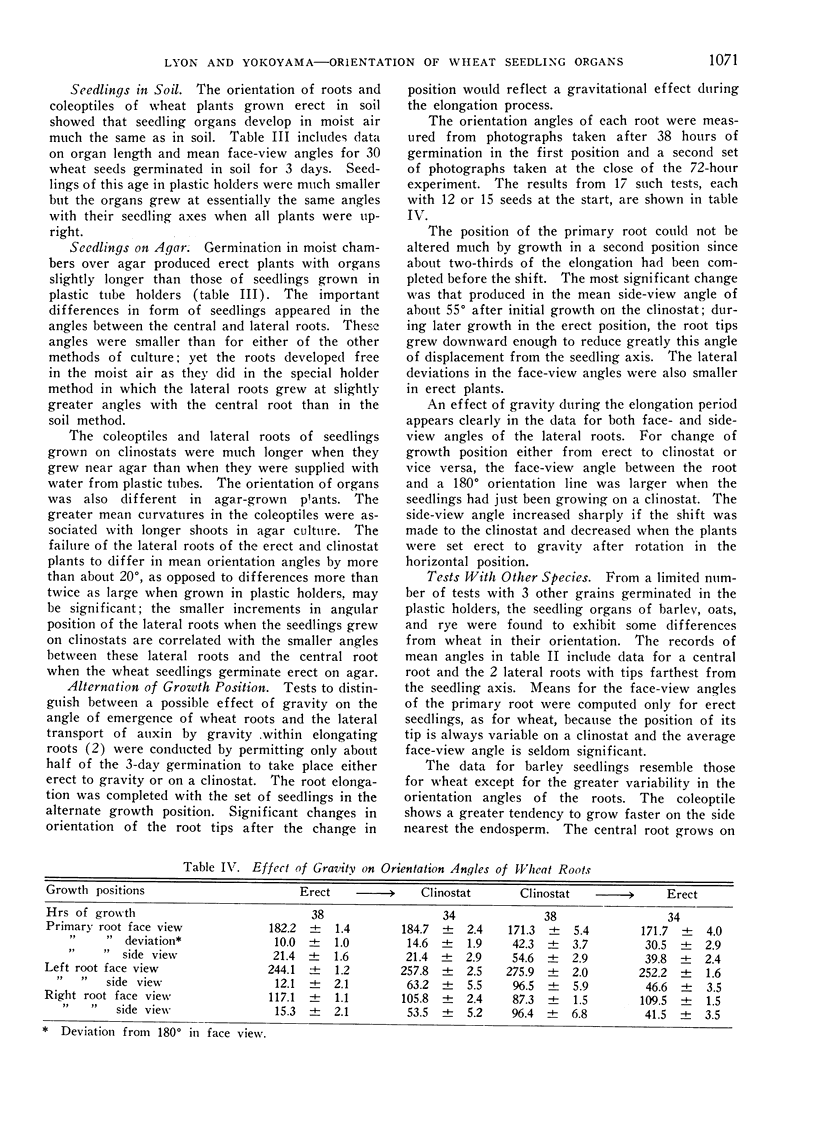
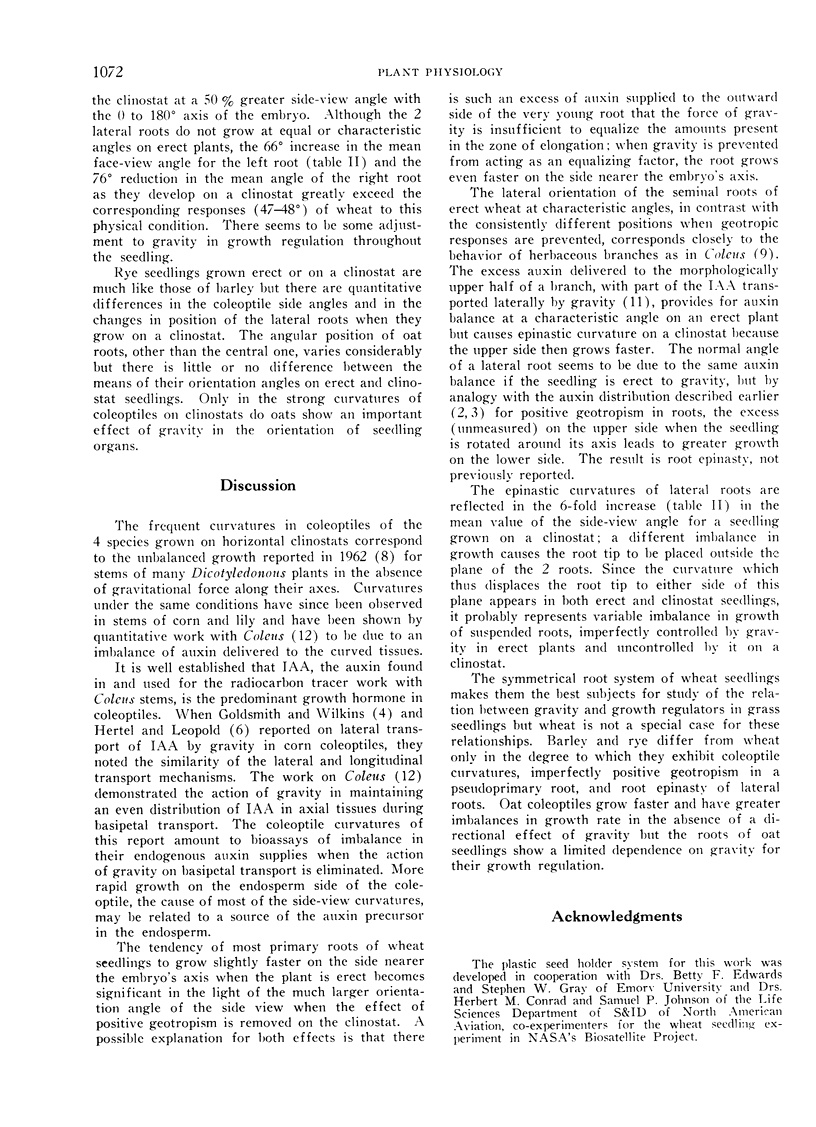
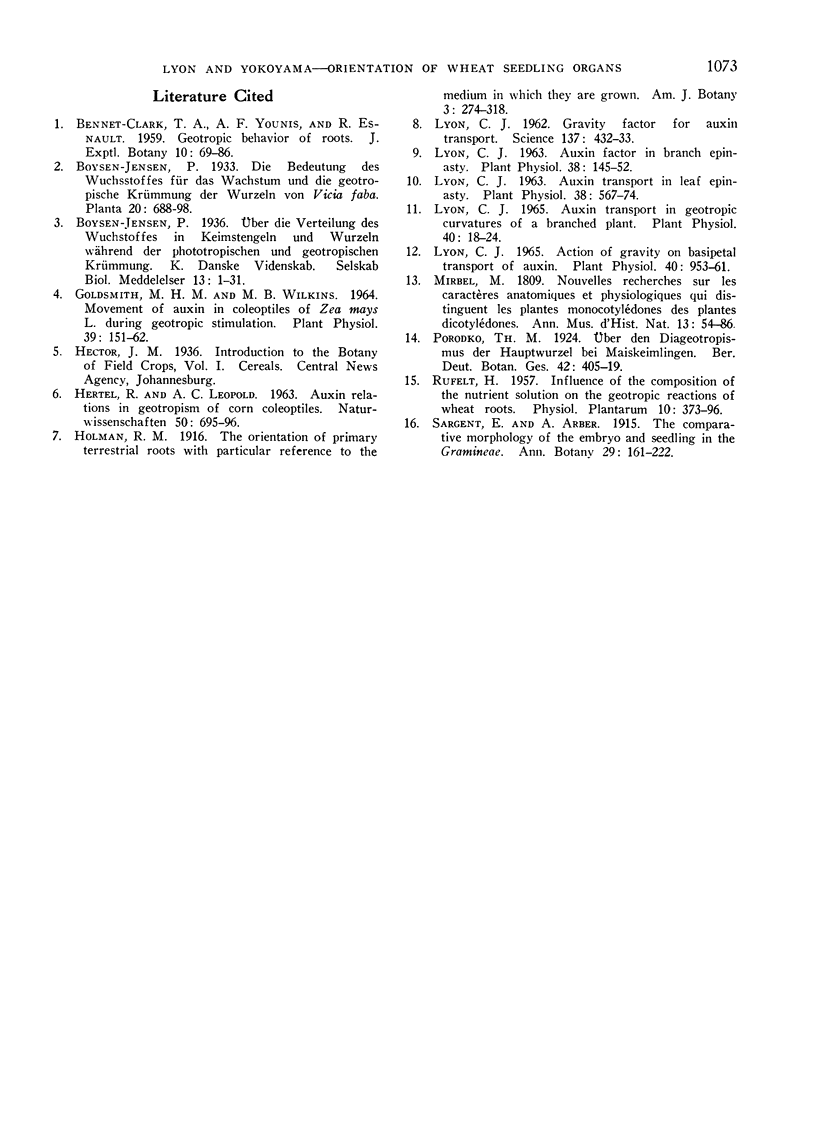
Images in this article
Selected References
These references are in PubMed. This may not be the complete list of references from this article.
- Goldsmith M. H., Wilkins M. B. Movement of Auxin in Coleoptiles of Zea mays L. during Geotropic Stimulation. Plant Physiol. 1964 Mar;39(2):151–162. doi: 10.1104/pp.39.2.151. [DOI] [PMC free article] [PubMed] [Google Scholar]
- Lyon C. J. Action of Gravity on Basipetal Transport of Auxin. Plant Physiol. 1965 Sep;40(5):953–961. doi: 10.1104/pp.40.5.953. [DOI] [PMC free article] [PubMed] [Google Scholar]
- Lyon C. J. Auxin Factor in Branch Epinasty. Plant Physiol. 1963 Mar;38(2):145–152. doi: 10.1104/pp.38.2.145. [DOI] [PMC free article] [PubMed] [Google Scholar]
- Lyon C. J. Auxin Transport in Geotropic Curvatures of a Branched Plant. Plant Physiol. 1965 Jan;40(1):18–24. doi: 10.1104/pp.40.1.18. [DOI] [PMC free article] [PubMed] [Google Scholar]
- Lyon C. J. Auxin Transport in Leaf Epinasty. Plant Physiol. 1963 Sep;38(5):567–574. doi: 10.1104/pp.38.5.567. [DOI] [PMC free article] [PubMed] [Google Scholar]
- Lyon C. J. Gravity Factor for Auxin Transport. Science. 1962 Aug 10;137(3528):432–433. doi: 10.1126/science.137.3528.432. [DOI] [PubMed] [Google Scholar]



